| Symbol | Definition | Units |
| h S | Static lift, resistance at zero flow | m |
| h PIPE | Pumping head losses owing to pipe friction | m |
| Q | Liquid flow rate | m 3 / h |
| n | Manning coefficient | Dimensionless |
| d | Pipe diameter ( internal ) | mm or m |
| l | Pipe length | m or km |
| h FTG | Pumping head losses due to bends, valves, etc. | m |
| C | Friction loss coefficient | Dimensionless |
| V | Velocity of flow in pipe | m / s |
| g | Gravitational constant | m / s 2 |
| H | Total pumping head ( = h S + h PIPE + h FTG ) | m |
| P | Pump input power | kW |
| Q GAS | Gas flow rate to air lift pump | m 3 free air / s |
| C ' | Constant | m 3 / s |
| m | Constant | Dimensionless |
| s | Depth of submergence | m |
| L | Lift height ( air input to top of rising main ) | m |
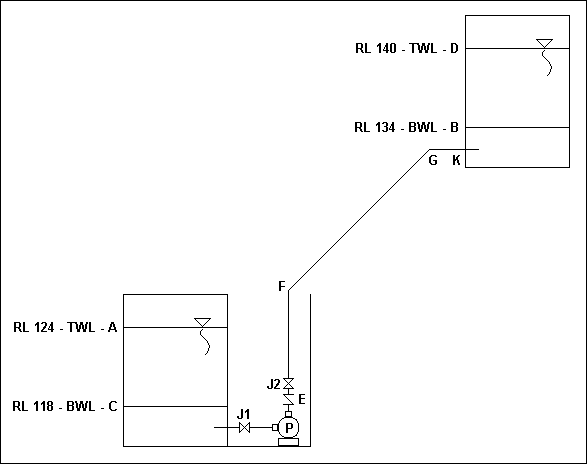
| Pipe material | Condition | Value of n |
| Coated iron and steel pipes | New | 0.010 |
| Uncoated iron pipes | New | 0.011 |
| Galvanized iron pipes | New | 0.012 |
| Vitrified clay pipes | After some weeks of service | 0.012 |
| Iron and steel pipes | After use | 0.013 |
| All pipes | With imperfect joints and in bad condition | 0.015 |
| Fitting | C |
| Belmouth | 0.10 |
| Bend | 0.25 to 0.50 |
| T - junction | 1.00 |
| Sluice valve | 0.15 |
| Reflux valve ( single flap ) | 0.70 to 2.00 * |
| ( * : The value of C for reflux valves increases as the velocity decreases. ) | |
| ( 1 ) | ( 2 ) | ( 3 ) | ( 4 ) |
| Q ( m 3 / h ) | h PIPE ( m ) | h S - MIN ( m ) | h S - MAX ( m ) |
| 0 | 0 | 10.0 | 22.0 |
| 25 | 0.4 | 10.4 | 22.4 |
| 50 | 1.7 | 11.7 | 23.7 |
| 75 | 3.9 | 13.9 | 25.9 |
| 100 | 6.9 | 16.9 | 28.9 |
| 125 | 10.7 | 20.7 | 30.7 |
| 150 | 15.4 | 25.4 | 37.4 |
| ( 1 ) | ( 2 ) | ( 3 ) | ( 4 ) | ( 5 ) |
| Q ( m 3 / h ) | V ( m / s ) | h FTG ( m ) | H MIN ( m ) | H MAX ( m ) |
| 0 | 0 | 0 | 10.0 | 22.0 |
| 25 | 0.39 | 0.02 | 10.4 | 22.4 |
| 50 | 0.79 | 0.09 | 11.8 | 23.8 |
| 75 | 1.18 | 0.21 | 14.1 | 26.1 |
| 100 | 1.57 | 0.36 | 17.3 | 29.3 |
| 125 | 1.96 | 0.57 | 21.3 | 33.3 |
| 150 | 2.36 | 0.82 | 26.2 | 38.2 |
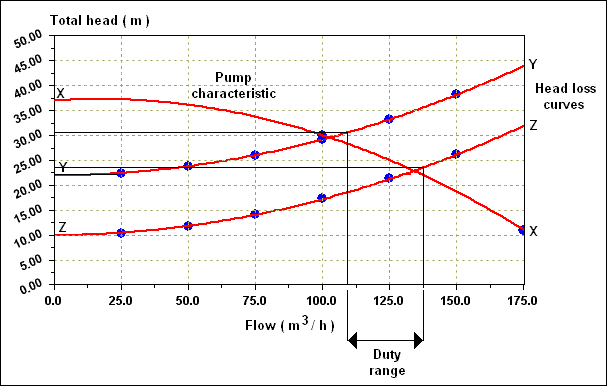
| Q ( m 3 / h ) | Q ( m 3 / s ) | H ( m ) | E | P ( kW ) |
| 50 | 0.014 | 34.5 | 0.58 | 8.2 |
| 75 | 0.021 | 33.0 | 0.71 | 9.6 |
| 100 | 0.028 | 30.5 | 0.77 | 10.9 |
| 125 | 0.035 | 26.5 | 0.76 | 12.0 |
| 150 | 0.042 | 20.5 | 0.68 | 12.4 |
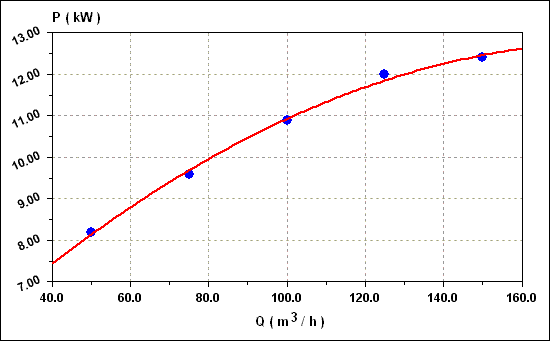
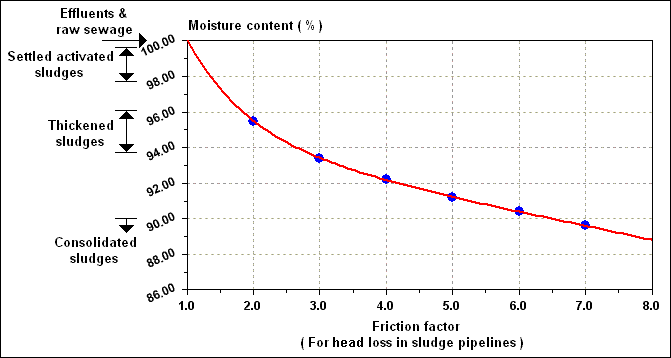
| Q ( m 3 / h ) | H TOTAL - MINIMUM ( m ) | H TOTAL - MAXIMUM ( m ) |
| 0 | 10.0 | 22.0 |
| 25 | 11.1 | 23.1 |
| 50 | 14.9 | 26.9 |
| 75 | 21.1 | 33.1 |
| 100 | 29.7 | 41.7 |
| 125 | 40.5 | 52.5 |
| 150 | 53.7 | 65.7 |
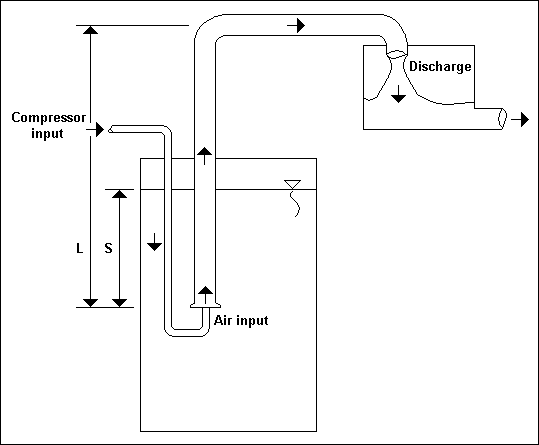
| S / L ratio | Pipe diameter ( mm ) | m | C ' |
| 0.71 | 25.4 | 0.0003 | 0.0013 |
| 38.1 | 0.0015 | 0.0050 | |
| 50.8 | 0.0029 | 0.0087 | |
| 0.53 | 25.4 | 0.0002 | 0.0010 |
| 38.1 | 0.0010 | 0.0033 | |
| 50.8 | 0.0019 | 0.0053 |
